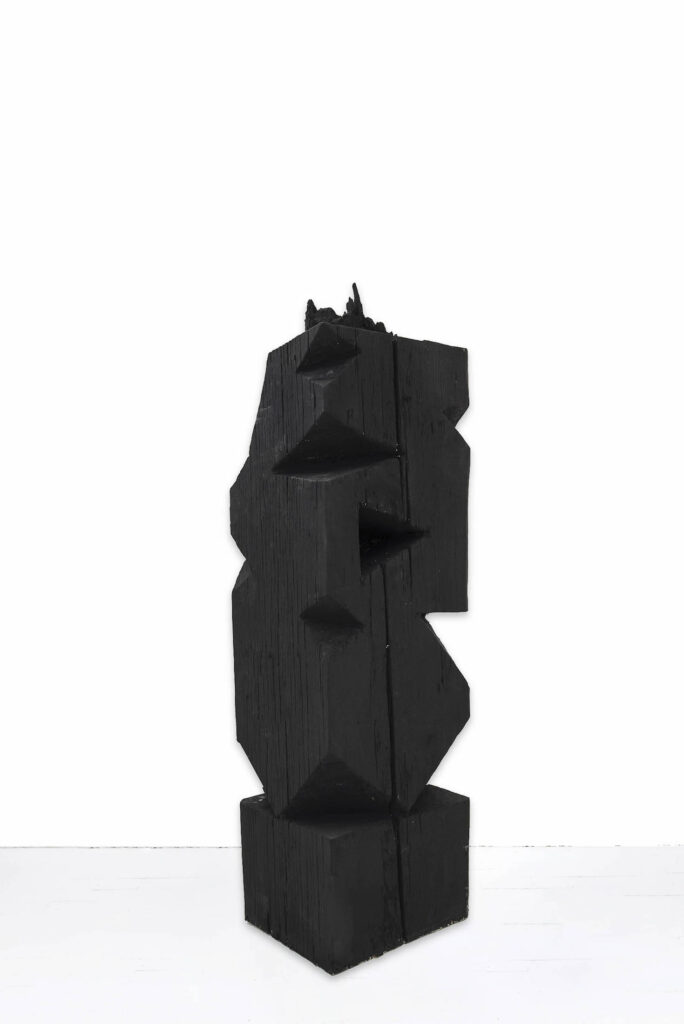ALDO CHAPARRO
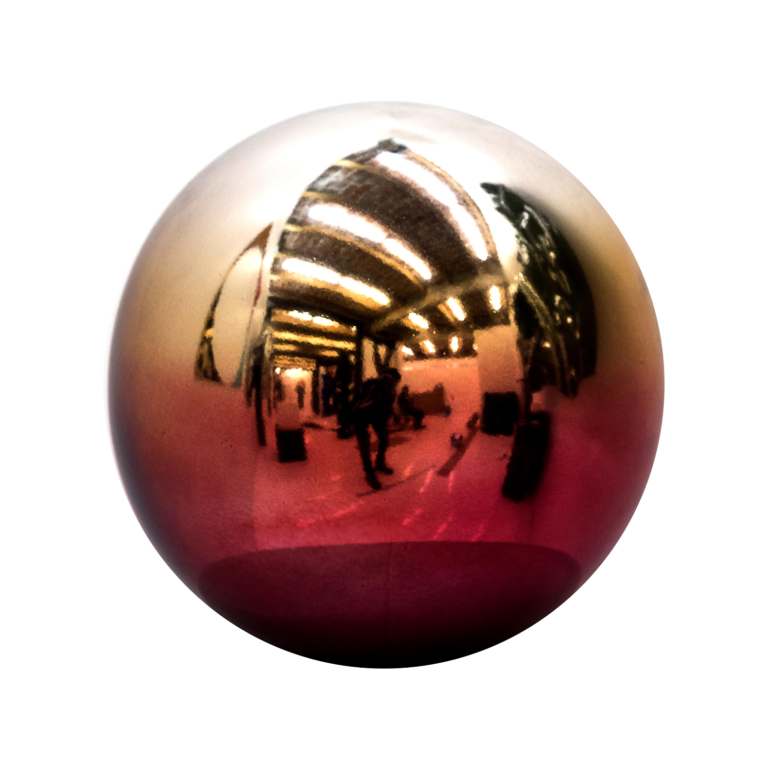
When you first look at Aldo Chaparro’s stainless steel sculptures, we have no choice but to freeze in its stoic stillness, met with an overwhelming sensation of trapped emotion from the artist himself. Born in Peru and currently based in Mexico City, Aldo’s neo-pop pieces have become a staple of contemporary Latin American art that stems from the artist’s exploration of post-industrial techniques – using his body as a physical tool reacting to fragile modern materials. The artist is currently celebrating the opening of his new exhibition space with La Galeria Rebelde in Los Angeles, as well as a retrospective show in Lima marking twenty-five years of his career. I had the pleasure of talking to the artist about his creative processes, and his continuous journey through uncharted territories in fine art.
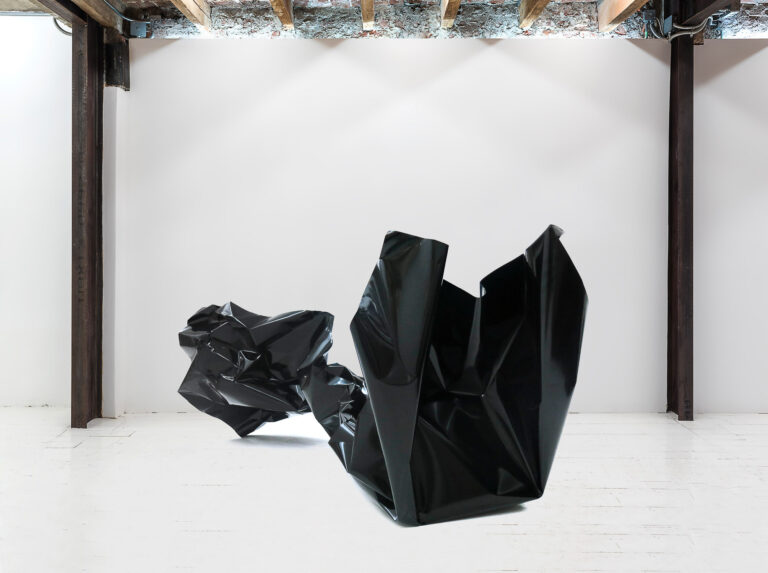
MX BLACK
JMT: Hi Aldo. I know that it has been a year full of restructuring. How have you been? How have you taken advantage of time during the pandemic?
AC: Indeed, it has been a time of much restructuring. In the beginning, my team and I put all our energy into making our processes easier and more efficient, eliminating what we felt was dragging us back and what the inertia of the day to day had not allowed us to detect.
Based on my experience, I tried to communicate to my team and collaborators how crises are not always the end of the road. Many times, if we know how to handle them, they can become great opportunities. It all depends on the way you handle those energies because in the end, everything is about learning. The first few months I did not feel very creative, but I knew that life had given me a break and that something was accommodating inside and outside of me, so I let things take their course in an organic way. Thus, after a few months I was completely immersed in one of the most creative stages I have ever experienced.
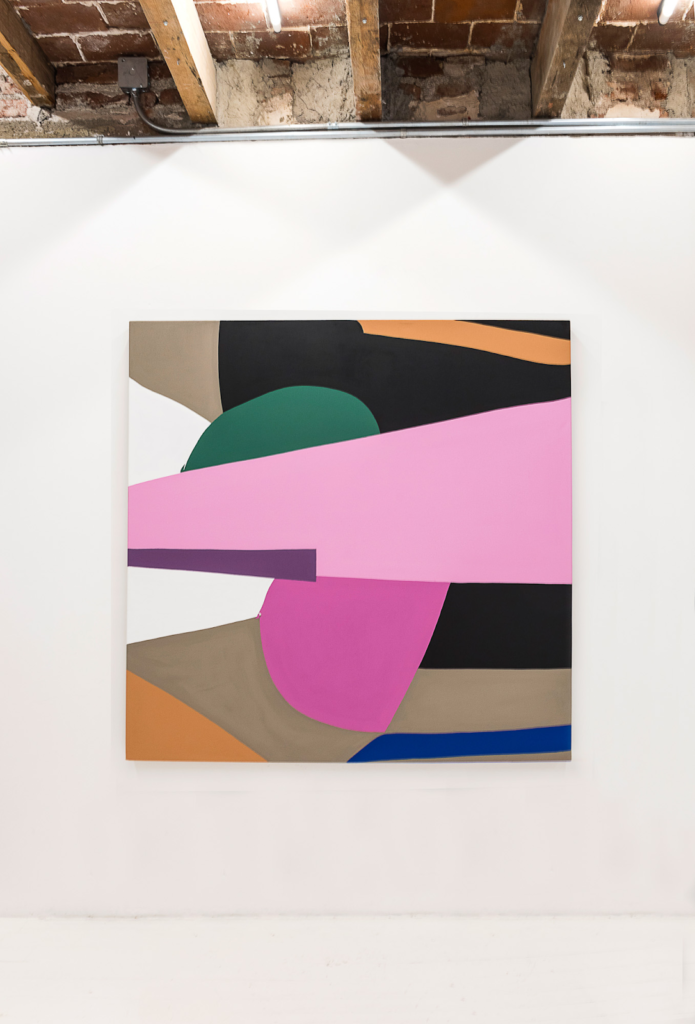
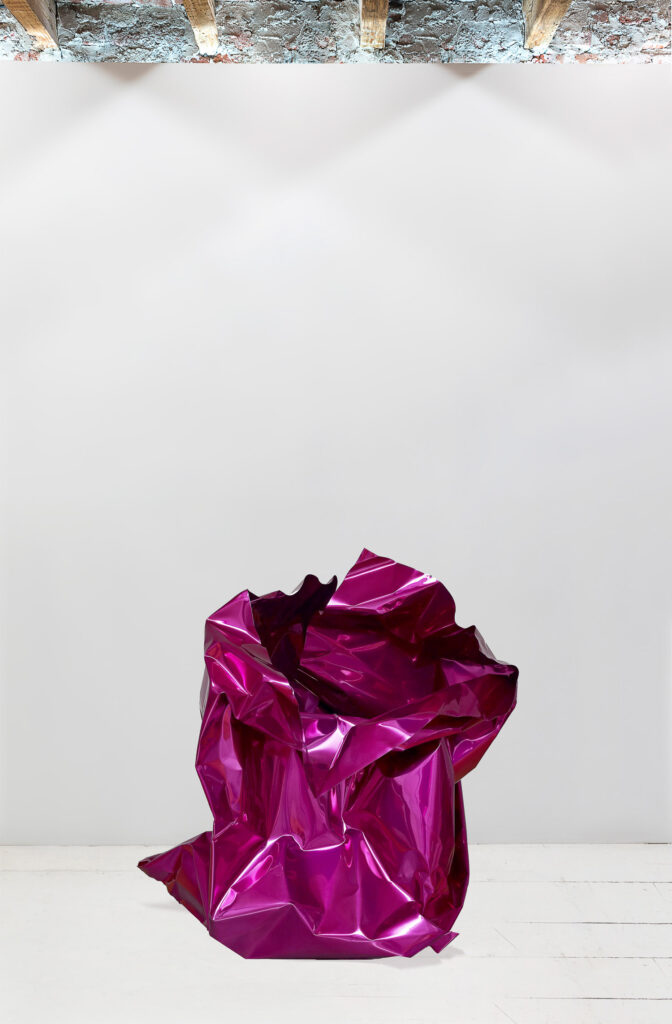
MX
JMT: Could you share with me a little about how you started your artistic career?
AC: I’ve never really done anything other than art or something related to it. As a child, my father quickly realized that things would be different with me. Thanks to his support and affection, I was able to study different techniques from a very young age. My father himself was always a very hands-on person and our family activities always involved building something. As time went by, we built impressive creations considering I was only a child.
When it came time to tell him that I had discovered that art was a profession in itself and that I wanted to dedicate myself to that, he was already looking to learn more about the subject so that he could accompany me and guide me on that path.
JMT: You are a multidisciplinary artist. What motivated you to experiment with sculptures?
AC: I’ve always been too restless and curious, so it’s very difficult to stay calm. Even now, at fifty-five years old, I am very excited to learn something new, although I must confess that only if it is my way, since I never liked classes or following instructions.
That is why a large part of my work has been collaborations with different creators in different disciplines. I have worked with musicians, writers, industrial designers, graphics, publishers, architects, scientists, and so on. This has been the way that best suits my personality, that is, learning directly from different professionals.
RETROSPECTIVE SHOW
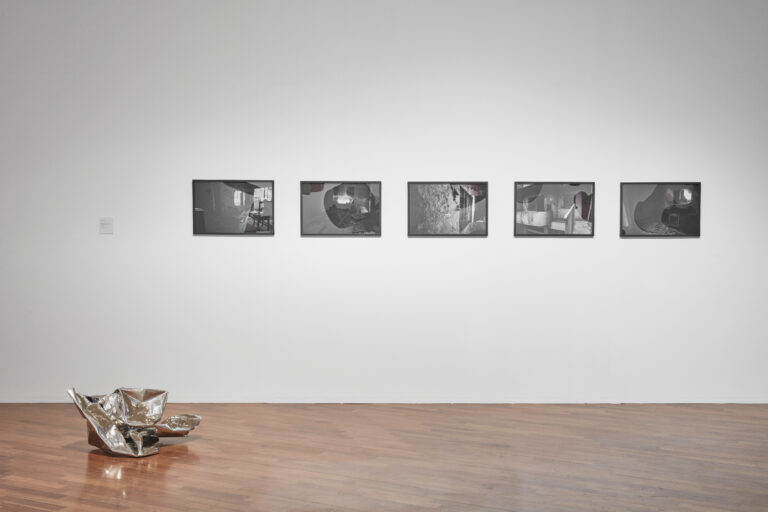
JMT: When I see your sculptures, I feel that there are very personal elements that seem to be frozen in time. How did you achieve your distinctive style of metallic sculpture?
AC: Many times, we think that our work is a collection of different ideas that have nothing in common. But only the distance that time gives you allows you the necessary perspective to see what remains; that vital line that is the one that connects everything that we do.
I believe that I can trace the origin of my pieces in wrinkled steel sheets, all the way back to my childhood. I have always been attracted to reflective materials, mirrors, polished steel, aluminum, the surface of the water, and so on. At the same time, and as part of a process of self-discovery, one of the things that I detected about myself was that I am not very patient and I tend to ruin things when the processes are extended too much.
After years of working on different techniques and materials, steel crossed my path, and immediately there was empathy between us. Thus, these pieces are the result of my relationship with the material. I fold the sheets with my body. It is a kind of fight/dance where the sheet of steel struggles to maintain its shape and I transform it. In the end, I think there is no winner, but the piece is the document of that event that shaped it.
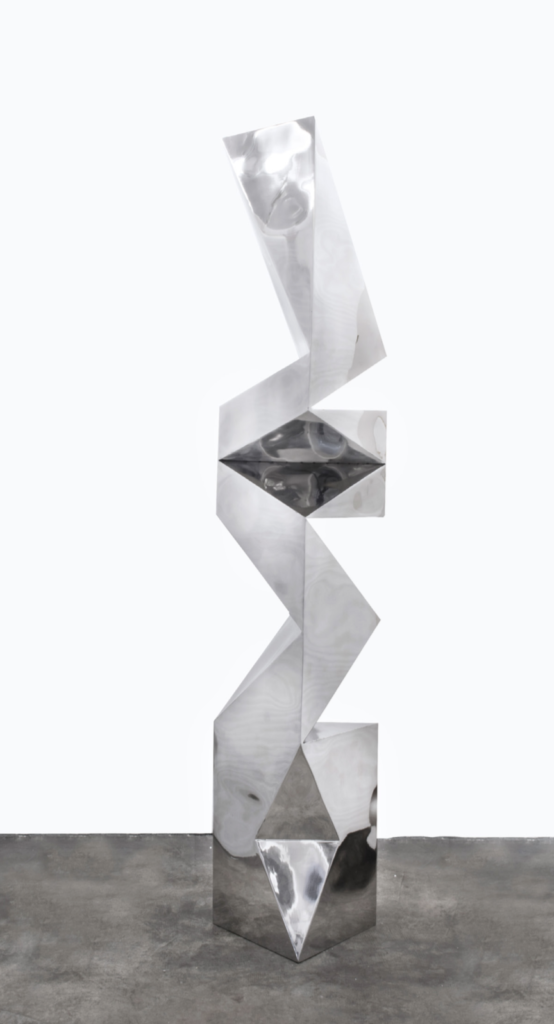
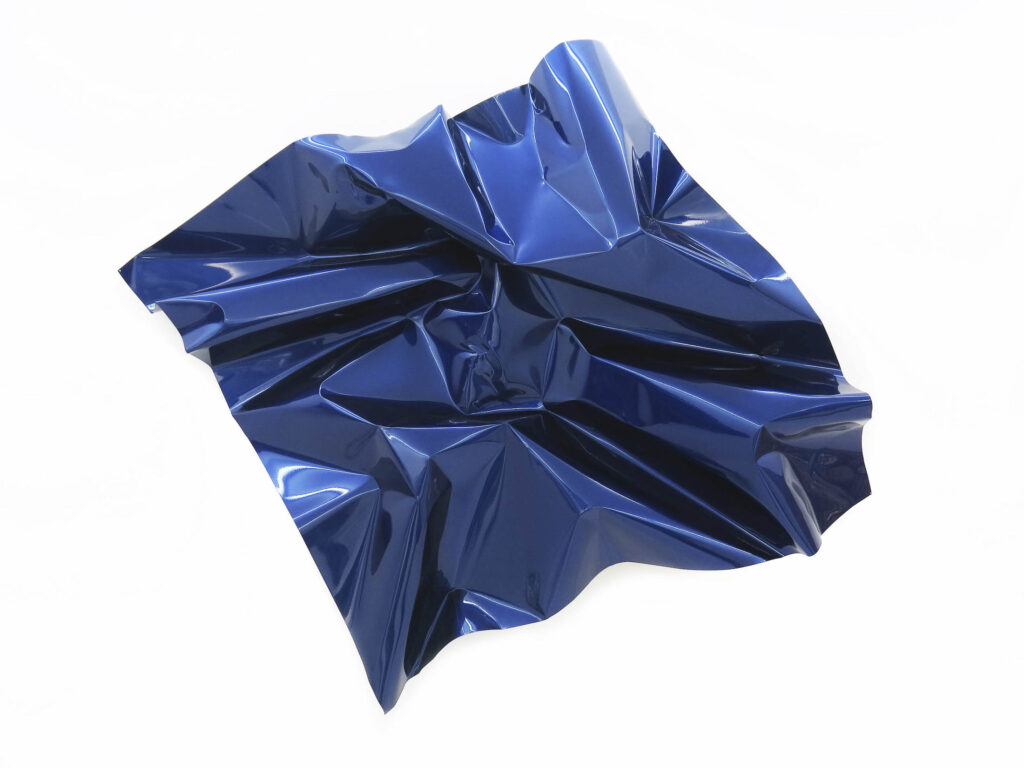
MX BLUE
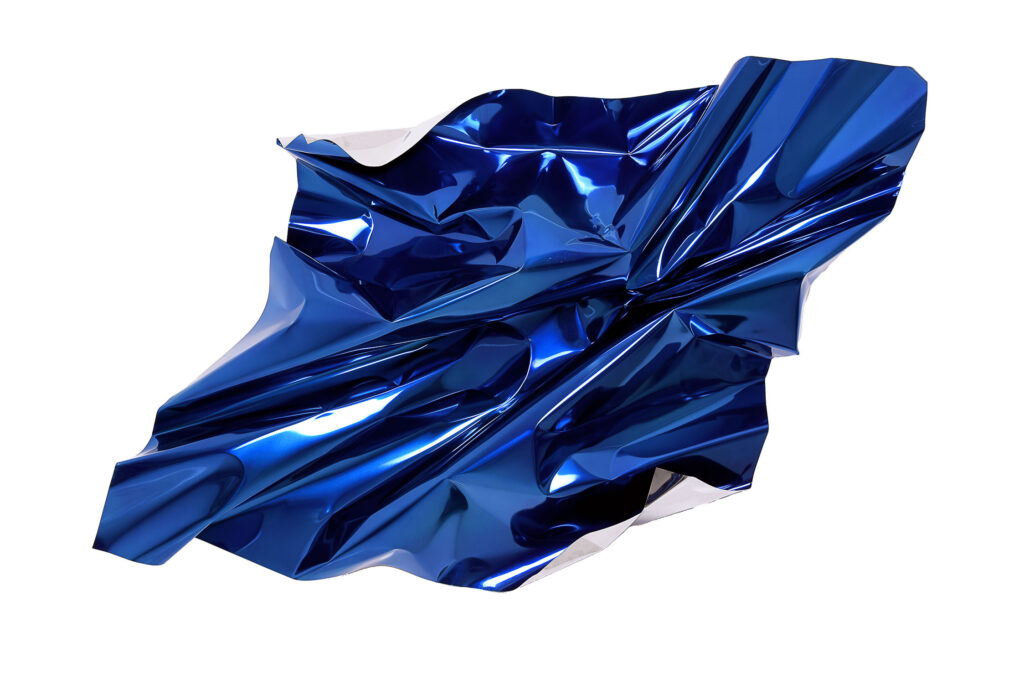
MX BLUE AND SILVER
JMT: Could you share a bit about your creative process?
AC: If you had asked me this question a couple of years ago, I would have told you that inspiration does not exist and that everything is work and determination. Now, I am sure it is not, but we must rethink what we understand as inspiration. My most inspired moments are when I am well, when I eat well, when I exercise, when I am well with my partner, when my daughters and the people who are close to me are happy and have everything they need. That is when ideas flow for me, far from that old perception that artists are better when they suffer. There is nothing more alien to me because living with a certain fullness is what makes my relationship with my work more effective.
JMT: What is behind your choice of colors and materials for your pieces?
AC: During all the years that I taught at the University of Monterrey, there was something that I always tried to communicate: there is a very strict relationship between three points, the idea, the material, and the resolution time. Once you have an idea, you must assign a material to it; for example, an idea in marble cannot be done on video and vice versa. When you’ve figured out that relationship, the third point — and the most important — is resolution time. That is, if you have a piece that corresponds to a month of work and you give it a month and a half, you ruin it, the same happens if you give it less time. There is a relationship of accuracy between these three terms that is immovable and our job is to understand it.
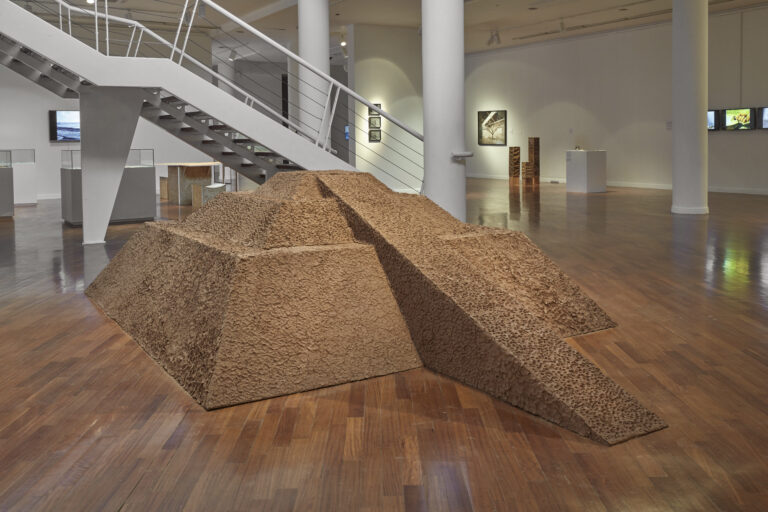
JMT: I heard that this year you celebrate 25 years of your artistic practice. How do you see the Aldo from 25 years ago compared to the Aldo of today?
AC: Actually, it’s almost 30 years! One goes through many stages over time. I remember hating my first pieces or being ashamed of some works that I did in different stages of my life. Some time ago, when I moved permanently from Monterrey to Mexico City, I made a mountain with many old pieces and set it on fire with my students. That night we danced around that gigantic bonfire and closed a period of my life together. Now things are different, when I see my old works, I look at them with tenderness. I have learned to embrace my past and love what has finally made me the person that I am today.
JMT: You were born in Lima, Peru, which is currently the stage of your retrospective exhibition. How does it feel to be back and complete the circle?
AC: Lima has always been a complex place for me. They say that nobody feels success until they succeed in their own land, but we also know that no one is a prophet in their land. Currently, I have a house in Lima that is my studio as well. It is a colonial house near the sea, which has become my refuge from the world. There, my family and I have had great moments together. I don’t really see many people when I’m there, but I do try to spend as much time as possible with my mother and my childhood friends.
These days my retrospective –which was paralyzed by the quarantine since March, when all this began– is finally closing. In the beginning, it was inevitable to feel frustration, since –together with my team from Mexico and Lima– we had been working on that show for more than two years and we wanted everything to be perfect. But, against all odds and far from making people forget about it, the time it was closed generated enormous expectations. People began to perceive it as something to see as soon as the quarantine ended, turning it into a kind of symbol of support for culture and the arts.
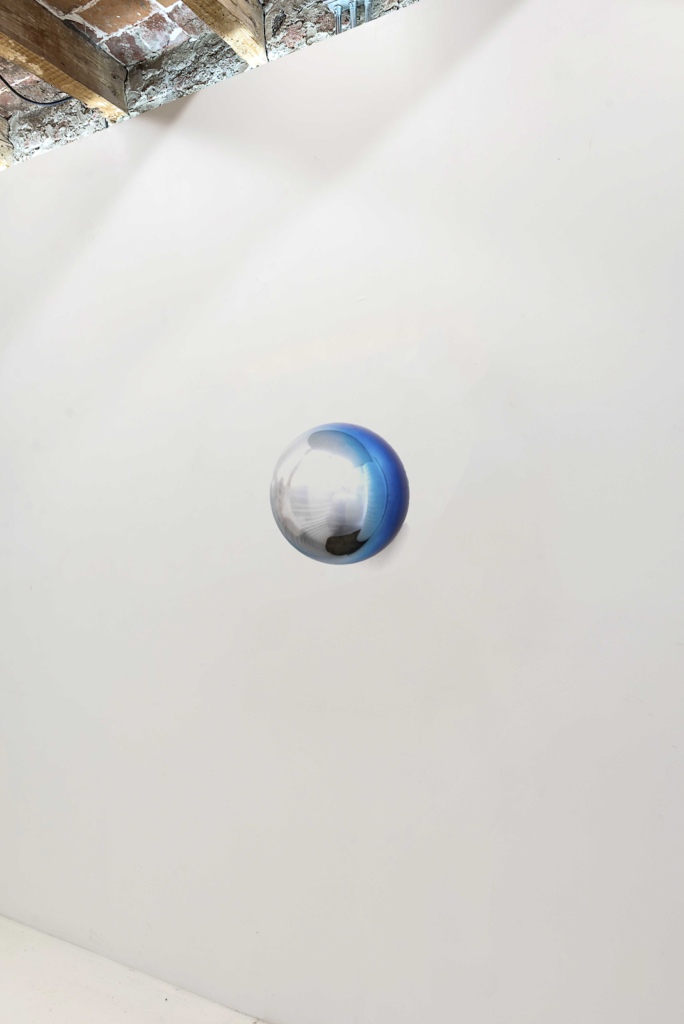
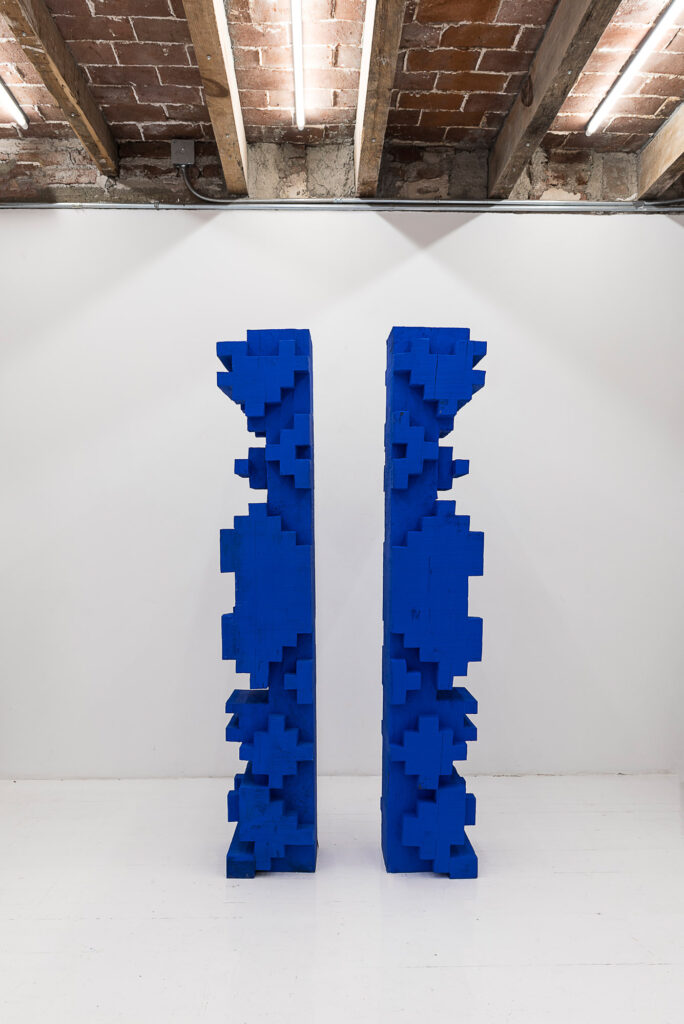
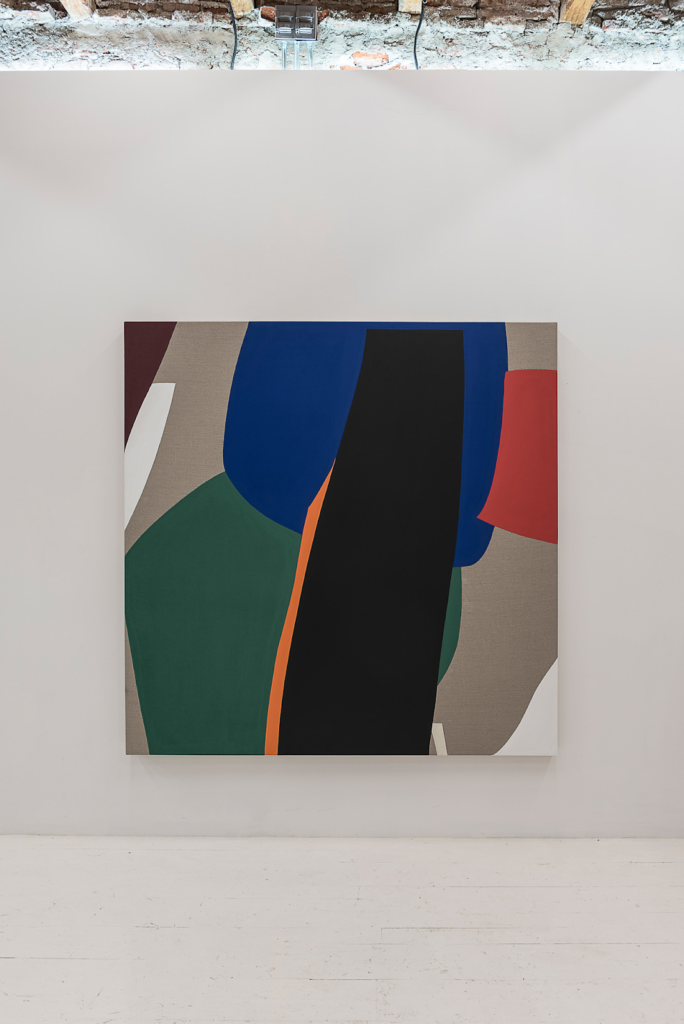
JMT: You are Peruvian, but currently living in Mexico City. What does Mexico mean to you?
AC: I have always thought that being a migrant is a necessary condition for human beings, if I had been born in Mexico I would surely have moved to Peru. Only by living in a different place than where you were born can you have a more complete perspective of life. Getting away from your comfort zone, and confronting your ideas with other cultures and ways of thinking, is essential to form more conscious human beings.
But I must say that I am Mexican. I could never live far from Mexico. My daughters were born here, and I feel Mexican culture as a vital part of my being. As Chavela Vargas said when her nationality she was questioned about her nationality (she was born in Costa Rica): “Mexicans are born where we want to.”
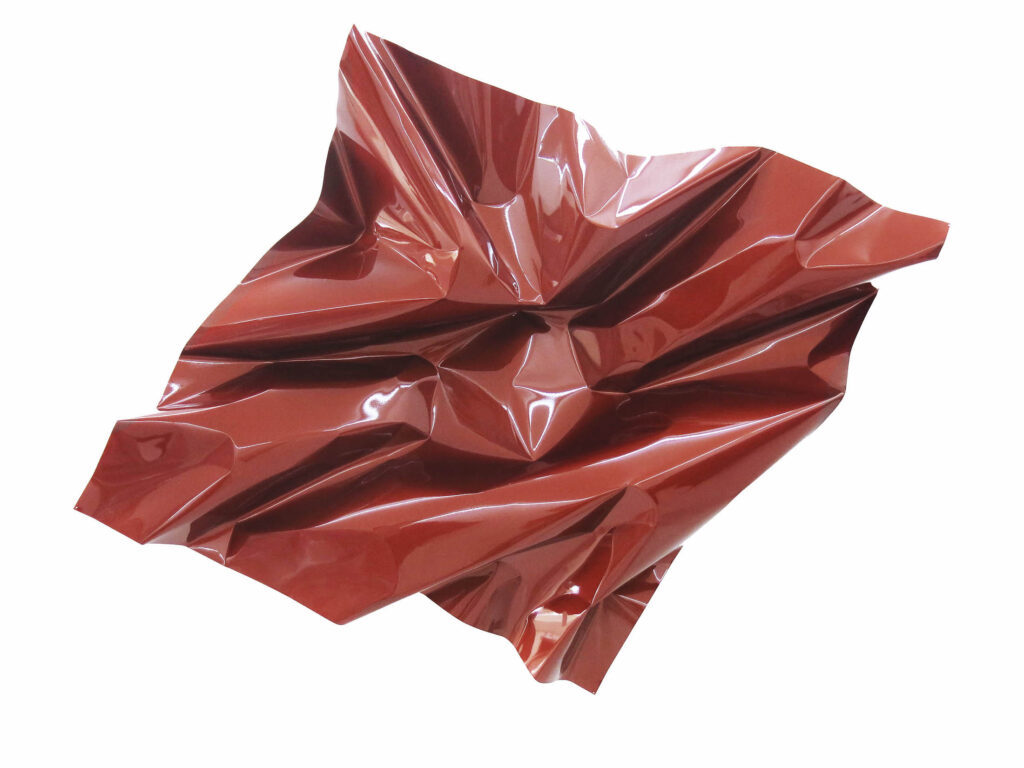
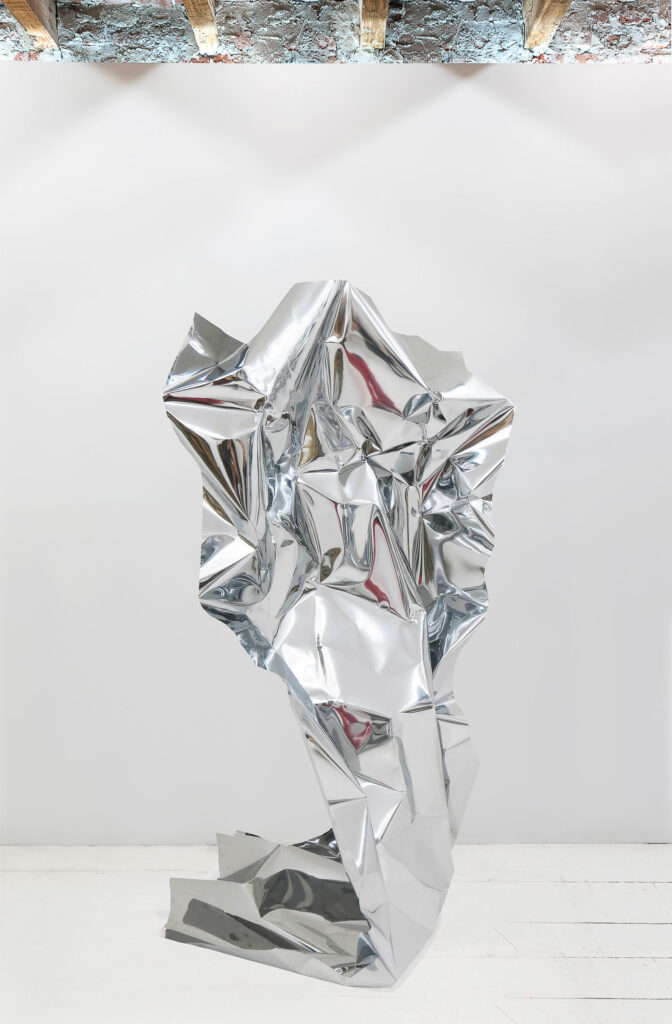
JMT: Congratulations on opening your space with Galería Rebelde in Los Angeles! The city has definitely become an important hub for contemporary American art. Do you have any expectations of how the American public will receive your art?
AC: I have been working in the United States for many years. Before this studio in Los Angeles we had one in New York. This city is complex, and the dream of many artists, so, after several years of fighting through thick and thin, I decided that with the same ease that I could open a studio (we already had studios in Mexico, Valle de Bravo, Lima, and Madrid), it was best to close this one if it could not keep up with the others. So I decided to move the studio to the west coast, where we are happy. I feel like Los Angeles is much more like us, in terms of values and interests. Also, we are very excited about this decision to collaborate with Galería Rebelde, who I consider to be the perfect companions for this adventure.
JMT: What can we expect from you in the near future?
AC: I have hundreds of projects in-sight, but the ones that interest me the most are those that seek a closer and more purposeful intersection with the communities in the cities with which we work. The studios in Mexico, Lima, and Madrid are also independent spaces where we exhibit the work of different artists, both young and established. It is about artists exhibiting artists, seeking to offer a less institutional and closer relationship with people. We have been working on this quite successfully for over ten years. In this sense, the Madrid and Mexico studios, mainly, have managed to position themselves as an important benchmark in their cities.

